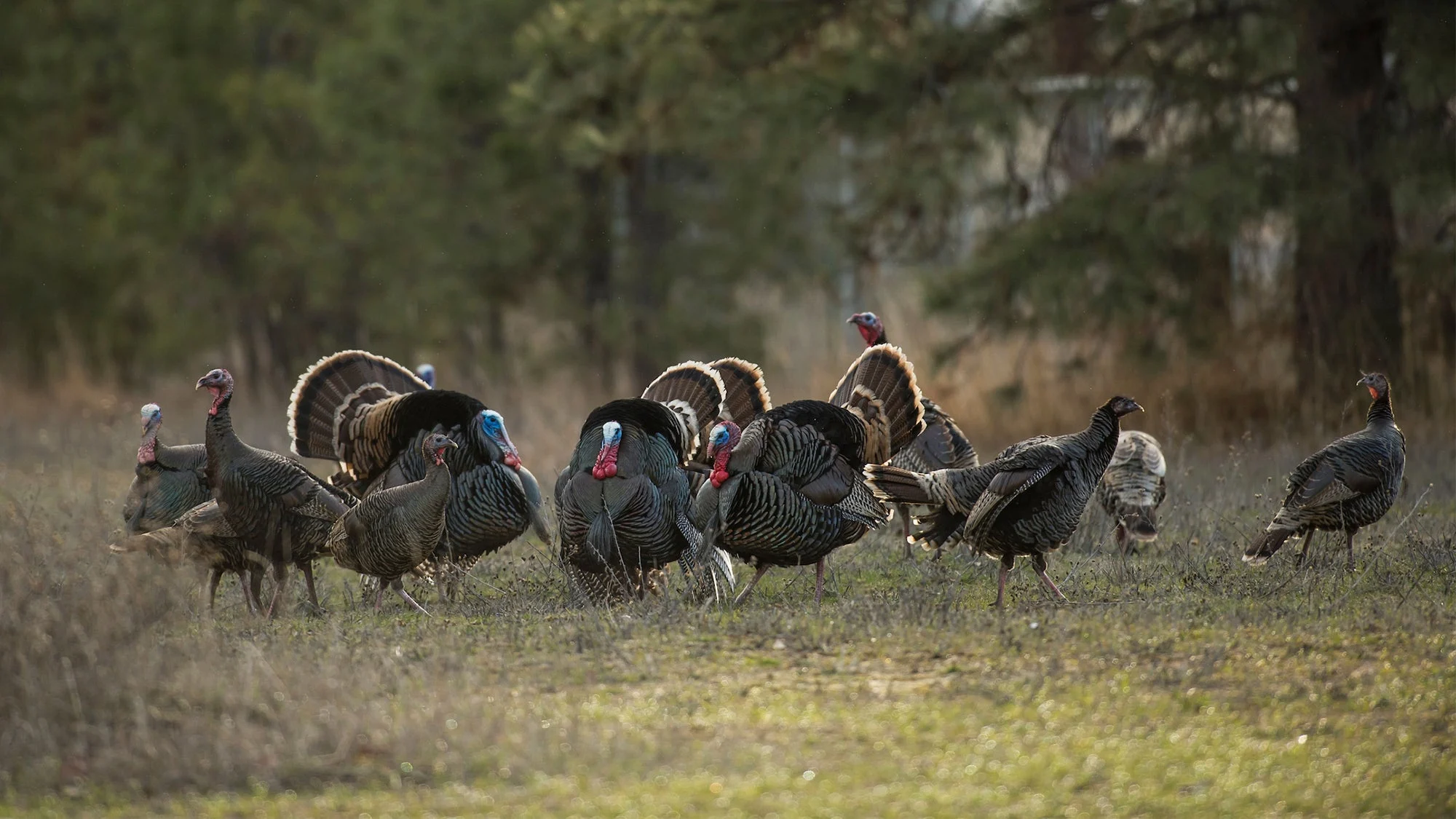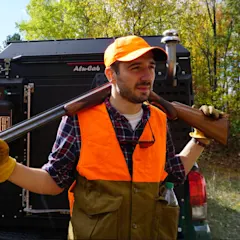Last year, we sat down with Drs. Mike Chamberlain and Patrick H. Wightman
at the annual NWTF National Convention with some pressing questions about wild turkeys: Were bird numbers still declining? Did bag limits need to change? Was reaping impacting turkey population? A full year and another spring gobbler season
have passed since that interview, and because the situation around these birds is always changing, we wanted to bring Dr. Chamberlain, widely known as the Turkey Doctor, back for an update on the state of the wild turkey. Chamberlain was just coming off of his hunting season with fresh observations on where turkeys have been and where they’re headed. Here is our Q&A, including his overall outlook for 2024 and beyond.

Learn how to get the all-new Field & Stream journal!
F&S: So, how was your turkey season?
Chamberlain: It’s been good, but I I’m tired. I travel quite a bit. I like to go to different places, and I actually didn’t hunt in my home state of Georgia a single day this season. I hunted in places I’ve been to for a number of years. In some of those places, the turkey population looked stable—pretty much the same number of birds I encountered in previous years. In others, it was obvious that the bird numbers were continuing to go down. I also saw a lot of hunting pressure, which is kind of what I’ve been hearing from other people on social media and from talking to friends. I think what you saw was a huge spike in activity during Covid, and while some of that has waned, turkey hunting is still a popular pursuit.
F&S: What are key changes you noticed this season compared to last?
Chamberlain: I think it really depends on where you are. The trends over the past couple of decades in the Southeast are still there, and there haven’t been any dramatic reports of population increases. But there are some good signs in some places. In Arkansas, for instance, turkey populations appear to have started to increase a little in the last few years. Harvest has trended up, and productivity has trended upward as well. But across the areas where declines have been most documented—the South and the Midwest—we’re not out of the woods yet.
F&S: Last year you were cautiously optimistic that populations might be stabilizing. Do you still feel that way?
Chamberlain: It took us a while to nail down the declines we spoke about last year because there’s no dramatic signal in the data from one year to the next to give us any clues. It takes looking at some data sets across a decade to realize that something’s amiss. Since last year, I don’t think anything has popped on our radar screen that tells us we’re trending in one direction or the other.
Right now, there’s more research being done on wild turkeys than there has been at any other time in my career, and that speaks volumes about the interest and the concern in what’s going on. But research takes time. It takes time to get the data, collate the data, summarize the data, and make sense of it. I know as human beings, we don’t want to wait. We want answers yesterday. But that’s just not the way science works.

There are indications that turkey numbers are stabilizing in some areas, but still declining in others. John Hafner Photography
As far as that research goes, what are you excited about?
Chamberlain: What gives me hope is that there are so many ongoing research projects focused on the same objectives. In many cases, [researchers are] using the same technology and the same methodology, which results in the ability to compare data from one study to the next. There’s a tremendous amount of collaboration that I’m seeing now that I didn’t see 20 years ago.
You have large studies being conducted in multiple states with all of the work being standardized, and that offers agencies really powerful data sets. There’s research ongoing right now on every possible topic you can imagine, whether it be reproduction, trying to figure out how many birds are out there, potential disease issues, and how harvest may be influencing turkeys. That gives me optimism that we’re going to find the types of answers we need in the upcoming years.
Last year, we spoke specifically about using turkey egg DNA to see how many hens are actually contributing to hatches. You thought it could be as few as 10% of the population raising successful clutches. Has the data on that research come in yet?
Chamberlain: We are clearly seeing that most of the poults are produced by a very small percentage of hens. We don’t know exactly why that is yet. It appears hens are taking two different strategies: There are some that prioritize their own survival, and there’s a much smaller segment that prioritizes reproductive success, and those are the hens that are making most of the poults.

The majority of turkey poults are hatched by surprisingly small number of hens within a flock. Adobe Stock
Is it the same hens making most of the poults year-after-year, or does that change?
Chamberlain: It’s the same hens. We’ve established that clearly in articles we’ve published. I don’t remember the precise figure, but its something like, if a hen hatches poults this year, it’s more than 60 percent more likely to hatch them again next year. If a hen doesn’t hatch this year, it’s less than 10 percent likely to hatch the next.
Avian influenza is back in the news. How is this disease affecting turkeys?
Chamberlain: Thus far, the evidence suggests there have been very minimal impacts to turkeys outside of some very localized outbreaks that affected a particular flock on a particular farm. But at this point, it doesn’t appear to be something that’s negatively affecting the population.
You’ve been working on educating all of us on turkeys for a long time. Do you think the average hunter is better informed than they used to be?
Chamberlain: Absolutely. I don’t think there’s any question that the average turkey hunter is more knowledgeable about the bird in general, and more up to speed with what the playing field is with turkeys. And I don’t think there’s any question that’s at least partially linked to our ability to communicate with each other now in ways that we couldn’t before.
So, what can average hunters do right now to support turkeys as we wait to see how populations and reproduction turn out?
Chamberlain: One important thing is to just be willing to continue supporting the resource. Purchase hunting licenses and keep putting resources into the state agencies. We all need to be aware that in some areas, turkeys might be doing well, but there are many areas where they are not. The situation is complex, and it requires that we all be willing to engage each other and think outside the box. But I think this is for certain: Every turkey hunter wants the same thing. We all want to be able to pursue this bird in the future, and we all want to be able to know that we left the resource better than we found it.
**Read Next: 2024 Turkey Season in Review: Eastern Gobbler Rebound, Bearded Hens, Late Gobbling, and Vienna Sausages
**


